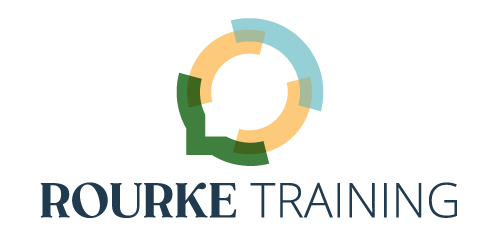Final exams are finished, and final course grades are in. The end of a school year is always a time when I look back in order to plan ahead. How I wrap up one term sets the tone for how the next one begins, so it’s worth my time to review the courses I’ve just completed, including sifting through student evaluation comments, and take notes for future iterations.
This has been my general practice for most of my teaching career, but this year, I’ve been specifically thinking about the end of semester period in terms of Kirsten’s prep, practice, and pivot method. This is the “before” snapshot. Stay tuned for the companion “after” post in the fall.
Kirsten developed her three part approach to public speaking and training so clients would be confident that they’re ready for anything. The strength of the framework is its adaptability for any discipline or topic.
Start with the known knowns – what you want to convey – and anticipate different pathways to that goal. What if you started in the middle? Or at the end? Which sections can be presented in any order and which must be in a specific sequence?
Practice, ideally in conditions that mimic where you’ll be speaking – out loud, with the same tech, in front of an audience who will ask you all kinds of questions. Those questions will help you identify and plan responses for topics that you should know but don’t, topics that are related but genuinely beyond the scope of your presentation, and topics whose connection to your material is understood only by the question-asker.
Armed with both of these, you’ll have the confidence to redirect when something truly unexpected inevitably happens.
I find the framework useful as multiple lenses for looking at a single semester. Each pass emphasizes different aspects of how the course went. This is especially useful because I always teach multiple sections of the same course in a semester. I keep the sections in sync as much as possible as the semester progresses, but each group of students has its own dynamic. The differences between sections provide flashpoints for examining what I need to adjust.
Applying Prep, Practice, and Pivot to this Semester
This semester, I taught one section of first year college writing and two sections of an intermediate level literature class on rebels and antiheroes. Reflecting on how the courses went, I see many areas for improvement. That’s not to say that the semester was unsuccessful in its own right. Quite the opposite – because I had smaller than usual literature sections and only 1 writing section, I’m not as exhausted at this point as I often am, so I have the mental bandwidth to think a bit more critically about course details.
Prep
When I first began teaching, I over-prepped for each class. I’d script everything I wanted to say and then scramble to keep to plan. For the past several years, I’ve loosened up. I’ll have a series of bullet points on sticky notes, but the order I touch on them depends on what’s happening once I’m in the classroom.
That’s generally working well for me, but this semester, I missed several opportunities to link course material to events in the world because I was only prepping from the syllabus. My writing students could have learned about a collaboration between poet Amanda Gorman and cellist Jan Vogler as inspiration for re-inventing one of their own projects. I could have added writer and director Nikesh’s 2024 film Rebel to my literature class as a bonus text.
Note: Be on the lookout for connections throughout the semester, not just on a week by week basis. Go back to listening to National Public Radio during my commute, rather than audiobooks. That’s where I get a lot of my timely cross-references to course material.
Practice
I definitely need to practice using some of the features of our online course management system. I tried using the platform’s “peer review” function without testing it from the students’ perspective first. Because their interface is different from mine, I couldn’t answer students’ questions. Worse yet, that one session cascaded into confusion during each peer review session for the rest of the semester.
Note: Make sure I know how BOTH the teacher’s AND student’s interfaces treat a feature that’s new to me before adding it to the course.
Pivot
This semester featured more pivoting than usual. On a few occasions, some students in a pre-assigned group would skip a class dedicated to peer review, stranding one or two classmates without a functioning group. One literature section was tiny, with only 6 students, and I almost gave a super-exclusive 1-on-1 lecture during a particularly hectic week when many classes had assignments due. Another student trickled in at the last moment, restoring a bit of the class’s more typical energy.
Note: Always keep in mind the course goals. If I need to pivot, strip the day’s plans back to the basics and take my lead from who’s in the room.
Looking Ahead to Next Semester
I’ll have three sections of the same first year writing class next semester, although 2 hours will separate the first from the second and third, which will be back to back. Usually, I teach all 3 sections back to back to back. Those 2 hours give me a rare chance to reflect & reset during the teaching day.
Prep
I have notes on this semester’s syllabus for what I want to change next time. I can do the same thing with the later 2 classes, annotating the sticky notes – or more likely, rewriting them – based on how the first class of the day goes. Those results can then feed back into prep for the next meeting of the first section, to keep everyone on par.
Practice
I should recruit a few colleagues to test specific features of our CMS platform with me early in the semester, so I’m confident that they’ll do what I intend. I can also be more transparent with students and tell them that I’m testing out something new. Modeling how to practice something in a professional context is always a valuable lesson.
Pivot
Embrace the improv mantra of “yes, and” when plans fall apart. I don’t have to have all of the answers. I just need a structure within which the class can still move forward. Tossing the question of how to proceed back to students will point to what’s uppermost on their minds, so I can build on their suggestions. This will also underscore that we’re all responsible for the success of a class, rather than students being passive consumers of the professor’s educational content.
How About You?
When you give a presentation or lead a training program on a regular basis, how do you use the experience of one iteration to inform the next? Do you take notes immediately following the event? Do you keep an active folder of “ideas for next time”? Or do you approach each iteration as an entirely new event?
Tell us about it in the comments.
Check Out Our YouTube Channel
The Rourke Training – Ongoing Mastery YouTube channel has a bit of something for everyone. Go there to get Kirsten’s take on examples of public speaking, as well as reflections on her entrepreneurial journey. The channel is also the home of the podcast Kirsten and Kellie produced for 5 years, Ongoing Mastery: Presenting & Speaking, which covers everything connected to continually improving your craft of being a public speaker, from interviews and mini-coaching sessions with guests to conversations between Kirsten and Kellie.
Come join us. Cheers, Kellie


